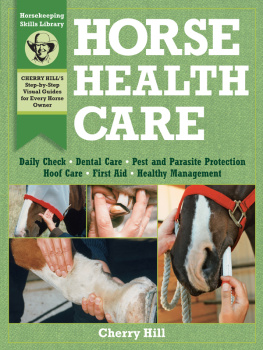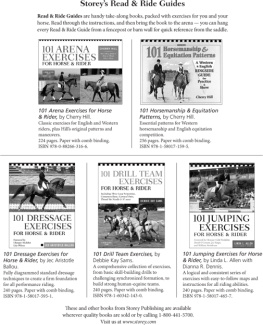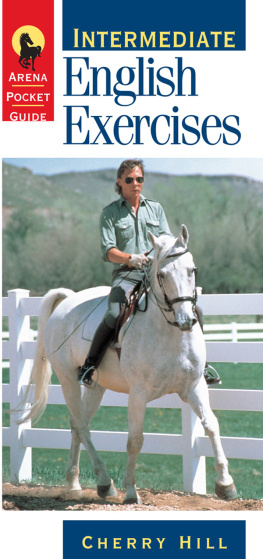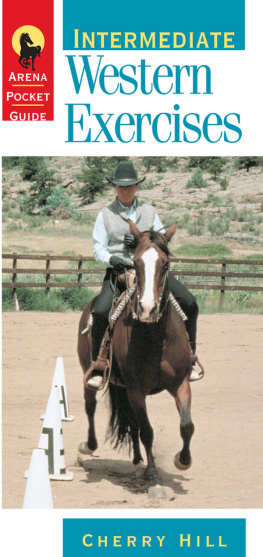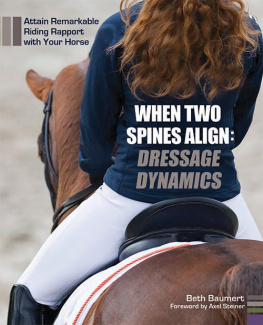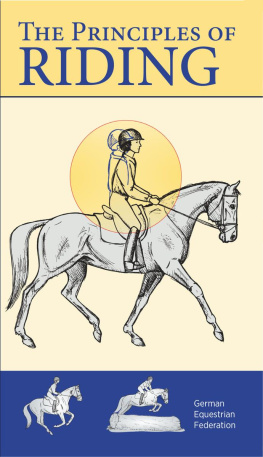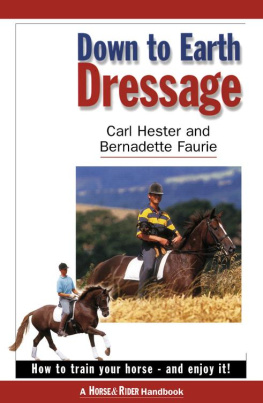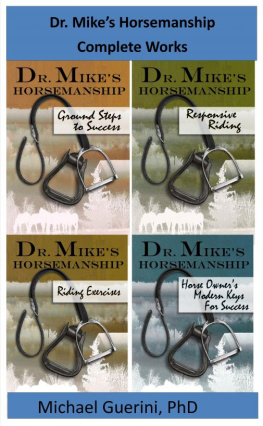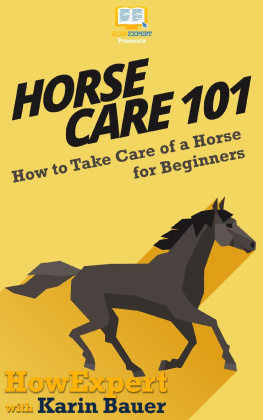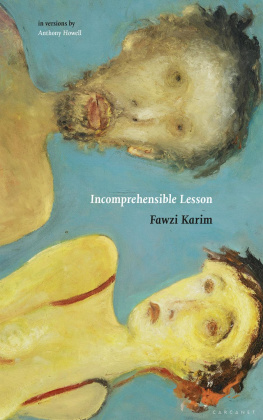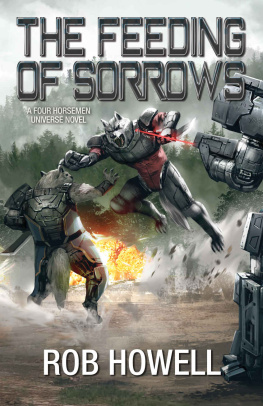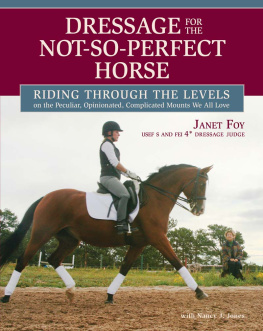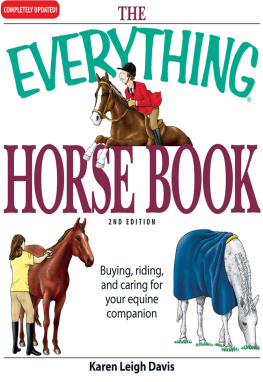The information given in this book is provided for the purpose of education and to give as complete a picture as possible. The reader, even if experienced in the handling of horses, should exercise extreme care in all circumstances.
Copyright 1999 by Cherry Hill
All rights reserved. No part of this book may be reproduced or transmitted in any form or by any means, electronic or mechanical, including photocopying, recording, or by any information storage and retrieval system, without permission in writing from the publisher.
Howell Book House
A Simon & Schuster Macmillan Company
1633 Broadway
New York, NY 10019
Macmillan Publishing books may be purchased for business or sales promotional use.
For information please write: Special Markets Department, Macmillan Publishing USA,
1633 Broadway, New York, NY
MACMILLAN is a registered trademark of Macmillan, Inc.
Library of Congress Cataloging information available upon request.
ISBN 0-87605-080-1
Manufactured in the United States of America
10987654321
Book Design: Rachael McBreartyMadhouse Studios
Cover Design: Michele Laseau
Contents
Acknowledgments
THANKS TO:
Richard Klimesh, photographer, for his keen interest in the project and his unique perspective while shooting.
Ariat International for safe, comfortable English and Western boots.
Top Tack, Inc. for specialized, innovative, high-quality tack for longeing and ground driving.
Topline Horse Gear for a wide variety of tack for ground training.
Les Vogts Equiline for snaffle bits for the Western horse.
Pro Equine Division of Farnam for protective leg boots.
THANKS TO MY COOPERATIVE EQUINE MODELS:
Doctor Zip
Ben Dickens
Aria
Seeker
Drifters Eclipse
Poco Pine Pete
Preface
As I work with a horse, my primary goal is to gain his trust and respect. With that established, we can develop a specialized system of communication that not only allows us to work together but actually invites us to interact. We both look forward to the sessions. The horse meets me at the gate. Hes willing and interested. I am inspired and motivated by the progress and spirit of the horse and cant wait to get to the barn. In this way, we become enthusiastic working partners. That is my long-term goal: a solid partnership where we can count on each other and take care of each other.
Although I want the horse to bond with me and respond to me, I do not want him to be a pet or depend on me to direct his every step. I want him to be a self-confident animal. After all, it is the spirit of the horse that has attracted me. Continual prodding and nagging have no place. That would be too disrespectful of the horse and it would take the joy out of horse training for me.
In order to safely and effectively work together, I must learn something about the horse and the horse must learn something about me. The best way to accomplish this is through consistent daily handling. Every day, I approach every horse encounter as training. The way the horse and I interact when I feed, clean the pen or stall, halter, and lead, or turn the horse out for exercise are just as important as the lessons in the training pen. The horse is always learning. And so am I. Trainers have to be life-long learners.
When it comes time for what is usually considered formal trainingin-hand maneuvers, longeing, ground driving, and ridingthe horse that has become a partner will take new lessons willingly.
Nowhere can you better prepare a horse for the requirements of riding than in a comprehensive ground-training program. And even after a horse is a very experienced riding horse, longeing and long lining provide an excellent means for monitoring progress, giving a horse a tune-up, or introducing new concepts.
Thorough ground training makes a horse safer, more confident, and more comfortable to ride. Thats why Ive written this book, and its companion volume, 101 Longeing and Long Lining Exercises: English and Western.
Here I discuss the total program. Besides explaining ground-training philosophies and procedures, I cover the behind the scenes concepts and ideas that will help you formulate your own personalized training program. By knowing why, you will be able to tailor a program to suit both you and your horse. To illustrate the stages of groundwork, I have included photographs of horses of different sexes, ages, and breeds in different stages of training. In many instances, the photos depict the first lesson for a horse in a particular phase.
I encourage you to first become thoroughly familiar with the total program. Then, you can tailor your longeing and long lining progression to suit your facilities, your goals, your horses characteristics, and your time schedule. If you dont have a round pen, youll want to incorporate free longeing techniques in your first work on a longe line. If you are not experienced enough for or your goals dont require the use of side reins, you might choose to develop contact with long lining. All along the way, you will make choices as you formulate your own personal training program.
In 101 Longeing and Long Lining Exercises: English and Western, I compiled my favorite ground-training exercises. You can use the exercise book as a workbook to plan your daily sessions with each horse as well as to set long-term goals. With each exercise, Ive included howto diagrams and step-by-step instructions.
It is my hope that these two books inspire you and give you direction so you can develop a solid, working relationship with your horse.
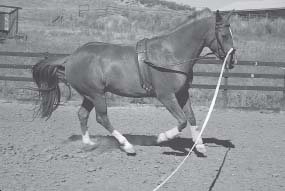
LONGEING IS MORE THAN TROTTING IN A CIRCLE
First, is it longeing, lungeing, longing, or lounging and what does it mean? Derived from the French allonge, which means extension, longe is the most correct English variation. I choose to use longe (longeing) so as to differentiate it from the word lunge, which is a sudden thrust, or plunge forward, something I associate more with fencing than working a horse around me in a circle. The confusion comes in that longe is pronounced the same as lunge. Longing and lounging, the other two Americanized versions of the word appear regionally in speech, but not too often in writing. Although you may wish your horse were trained,


